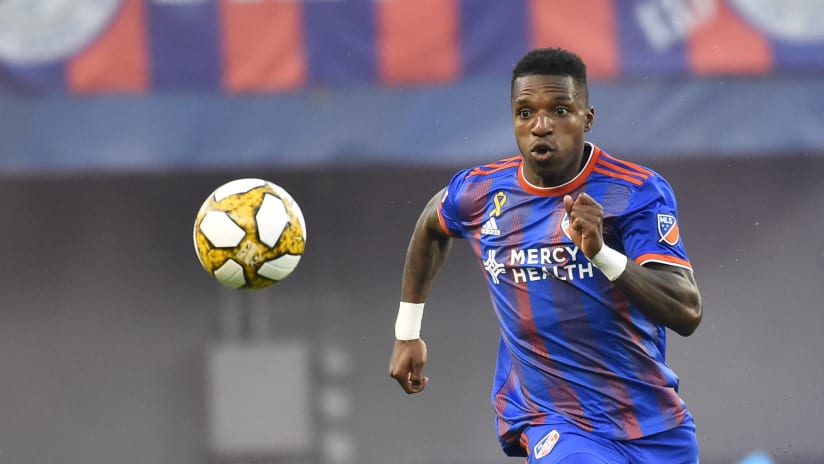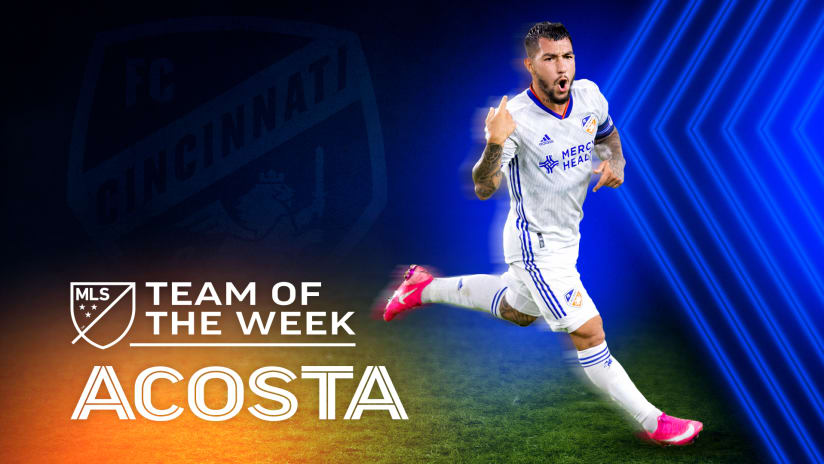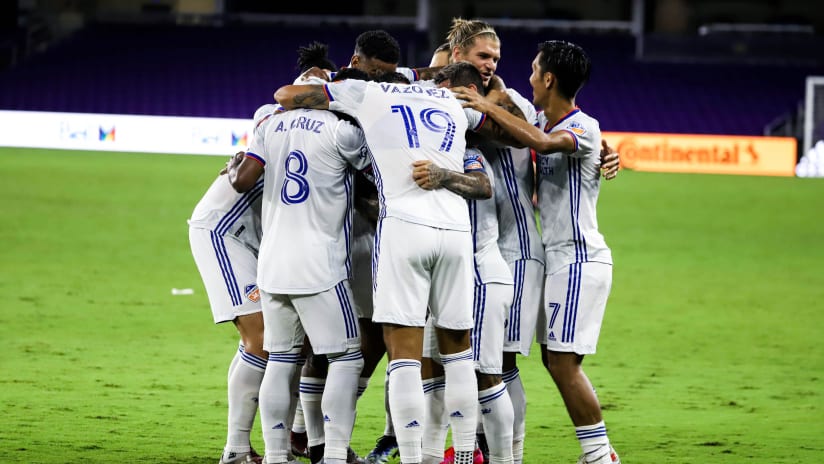Truthfully, Joseph-Claude Gyau joined FC Cincinnati last August in the midst of a dire situation.
With 10 games remaining in the regular season, the club was all-but eliminated from the 2019 playoffs and struggled to score. After the Orange and Blue spent months trying to play a possessive style that build possession from the back, that was scraped and the team settled instead for an all-out defensive approach.
With goals hard to come by, the focus was less about creating them and more about preventing them. Creative players, like the wingers, had to adjust to a playing system requiring them to be less creative.
“We were just kind of playing for pride,” Gyau said looking back.
When FC Cincinnati resume the 2020 regular season on Saturday night in the MLS is Back Tournament, it’ll be a chance to face their biggest rival with a new head coach and new tactics.
But equally as important, though, is Cincinnati wants to be known for a new identity.
Instead of being a team known for a leaky defense in 2019, in 2020 it wants to be synonymous for having an expressive, attacking style that generates goals.
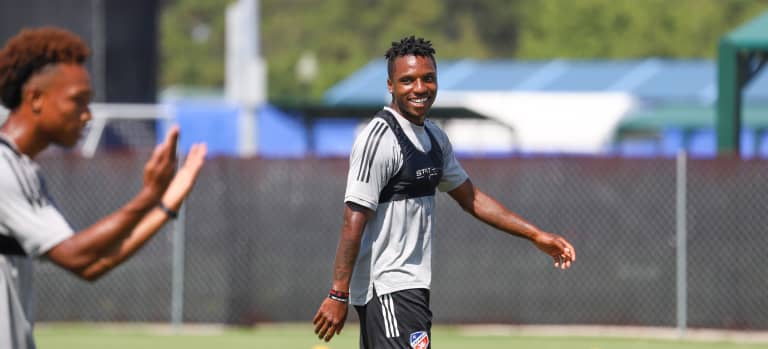
“I feel like this year we can really find our feet,” Gyau said. “We have the guys to do it, and all we have to do is make it come together on the field. Granted, even though we have a lot of great players, we still have to make it work. That’s half the battle. We have the quality. Now, we have to put it into play.”
Jaap Stam’s FCC won’t be limited to a single formation, but rather, the team will have a singular system – one that uses width and space to its advantage. For wingers like Gyau, that makes their roles vital. There’s a focus on being stout defensively, but once Cincinnati gains possession, the club wants to counter and strike.
This is a demanding approach – mentally and physically – but it’s one that’s perfect for speedy wingers and teams that have multiple scoring options. Basically: the 2020 FCC frontline.
That was largely lacking in 2019.
The club’s Designed Player finished with one league goal, while the first pick in the Expansion Draft produced three goals in 21 games. The leading scorer was a box-to-box midfielder, and the club finished with a league-worst 31 goals.
These are bleak facts, but they led to an offseason of offensive upheaval.
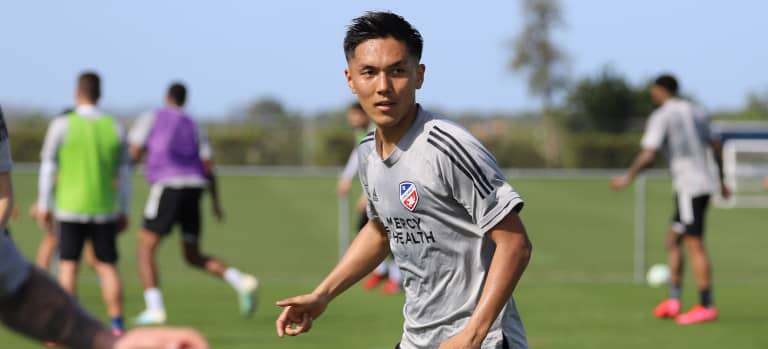
Jürgen Locadia signed on loan from an English Premier League side. Brandon Vazquez is only 21 but is already in his fourth MLS season. Yuya Kubo, a DP, and Adrien Regattin, add depth on the wings, while Siem de Jong spearheads the midfield and Haris Medunjanin anchors it as a deep-lying playmaker.
Add all of this – plus Stam’s embrace of fast, fluid soccer – and suddenly the team that struggled to score has a multi-headed attack capable of creating goal-scoring opportunities across the frontline.
“He gives us the freedom up front to be able to create in the attacking third, yet we’re more structured in the back,” Gyau said. “That (freedom) is everything a player can ask for, to be honest. Especially in the position I play in, we thrive off those situations where you’re able to get the ball into that last third and pretty much freestyle.
“It kind of gives you a sense of security to where you can try things.”
That security has basically been missing since the Orange and Blue entered MLS a season ago.
While they could build possession from the back, a simple mistake or error could leave the side sprinting back to stop an opponent’s counter attack. Now, Cincinnati want to see the opponent forced into the same situation.
By strengthening the back, FCC’s attacking players have the security to “let those creative juices flow” and create, not prevent. Instead of worrying about what could go wrong, Gyau said players can focus on what they do best.
He’s not the only returning player who loves the new system that Stam is implementing and the confidence that comes with it.
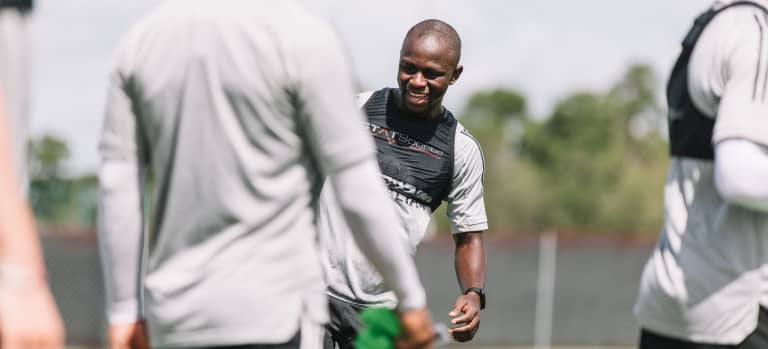
Kekuta Manneh praised the attacking identity that Cincinnati is forming and said there are multiple attacking options – something that would’ve been a luxury a year ago.
“I think the coaching staff are pretty pleased with having that amount of quality at their disposal going forward,” Manneh said. “They can use it so many ways, and it’s just up to them how they want to use it and who they want to bring in and who can give the team energy off the bench.”
It’s worth noting that FCC being able to use five subs could lead to Stam constantly rotating the wingers and forwards – keeping them fresh while troubling the opposing backline.
For someone like Gyau, the MLS is Back Tournament can be used as a springboard to show why FCC signed him in the first place – he’s a dynamic winger who thrives in small spaces, which can lead to teammates having more room to attack.
“(Stam) knows I’m a one-on-one type of guy, so he tries to emphasize trying to find me out on the wings where I’m isolated in a spot,” Gyau said. “In counter situations, as soon as we win the ball, I’m usually the first one to break out … That’s already in my game anyway, so that’s kind of what I already expect from myself.”
As for Manneh, the freedom of creative expression also compliments his game. Throughout the 2019 season, he was deployed as a winger, a shadow striker and as a forward. His ability to move across the line caused problems for the opposition, and he finished with four goals and three assists.
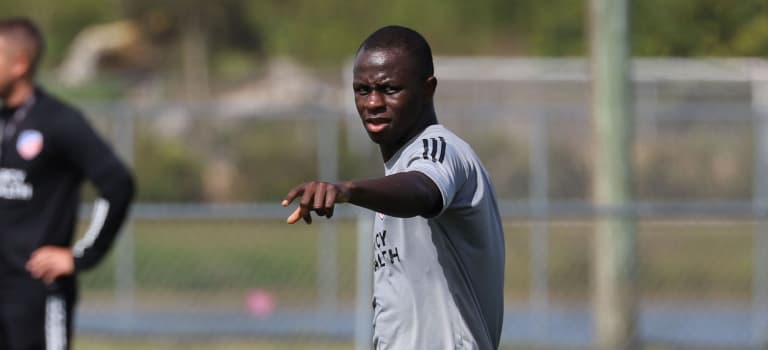
“Being on the team, I’m really, really excited with the options we have going forward,” Manneh said. “(Stam) can flip it in so many different ways. I’ve seen the coaches do it at training and in some of the games we’ve played and it’s been very, very impressive.”
Very, very impressive sounds really, really troubling for another team to stop. We’ve only seen glimpses of this from the Orange and Blue in the past – think the second half against the New York Red Bulls in March, or the first half against the Montreal Impact last May.
But when FCC have turned their potential into reality, it’s delivered impressive results showcasing the peak of the club at its powers. Stam is implementing tactics that can hopefully replicate that every match.
FC Cincinnati went into the offseason wanting to reshape their attacking options. Now that they have, can that lead to more goals and a new identity?
There’s certainly more of an interest in finding out than worrying about what the opponent is going to do next. We’ve yet to see that from FCC since they entered MLS – and other have, too.

